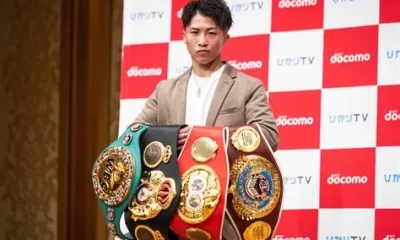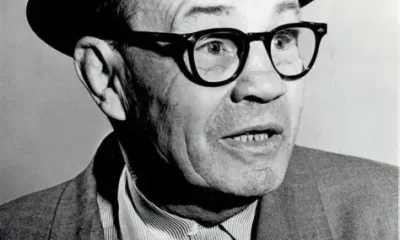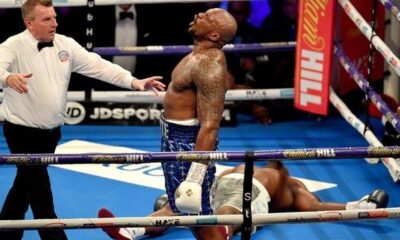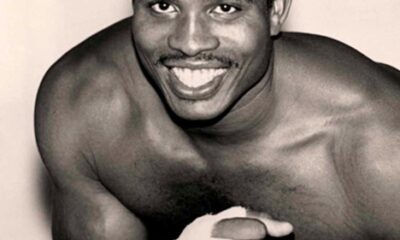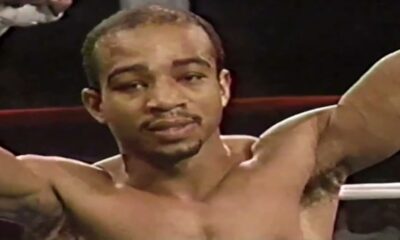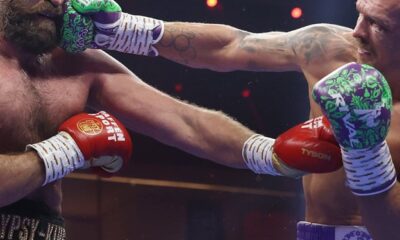Book Review
Literary Notes from Thomas Hauser
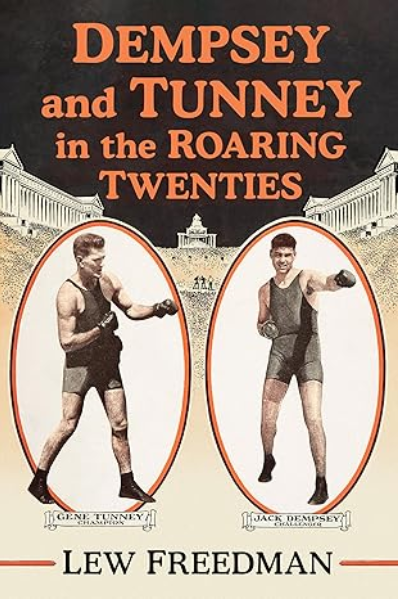
Literary Notes from Thomas Hauser
The fights between Jack Dempsey and Gene Tunney in 1926 and 1927 were among the greatest sports spectacles ever contested in America. Lew Freedman examines these fights within the context of their time in Dempsey and Tunney in the Roaring Twenties (McFarland & Company).
Freedman weaves chapters on Babe Ruth, the founding of the National Football League, Bill Tilden, Red Grange, Notre Dame football, prohibition, and Charles Lindbergh into his work. “Ruth and Dempsey,” he notes, were “the two most vivid sporting personifications” of the decade. Dempsey’s dismantling of Jess Willard, in 1919, he writes, was “one of the greatest high-profile sports slaughters of all time.”
As for Tunney, Freedman observes that, while some people (including many sportswriters) viewed him as less of a fighter because of his penchant for reading books, the former marine was a “tough-as-nails, hardwired, single-minded fighter. A tough guy but not with a tough veneer.”
Dempsey and Tunney, Freedman states, “seemed so different but at heart may well have been more similar than many suspected.”
The Dempsey-Tunney fights were classic confrontations between a puncher who was past his prime and a boxer who was in it. The official attendance for Dempsey-Tunney I in Philadelphia’s Sesquicentennial Stadium was 120,557. An estimated 39 million more people listened to the fight on the radio. Tunney-Dempsey II, contested before 104,843 fans at Soldiers Field in Chicago, generated boxing’s first two-million-dollar gate ($2.7 million – equivalent to $50 million in today’s dollars).
Tunney won both fights by decision. The second encounter is best remembered for the “long count” controversy that ensued when referee Dave Barry refused to start counting until Dempsey went to a neutral corner after dropping Tunney to the canvas in round seven (the only time in Tunney’s career that he was knocked down).
Later, Tunney said that he could have risen to his feet earlier and noted, “Only dazed boxers and show-offs fail to take the nine seconds [as counted off by the referee] that are theirs.”
Freedman does a nice job of recounting how Tunney kept an eye on Dempsey for years, monitoring the champion even as he moved up the ranks on his own sojourn through boxing. Tunney’s five fights against Harry Greb are also well-told.
However, Freedman’s work doesn’t have the depth and nuance of Randy Roberts’ trailblazing biography of Dempsey (the most reliable of the Dempsey biographies) or Jack Cavanaugh’s study of Tunney. In fact, the bibliography at the end of Dempsey and Tunney in the Roaring Twenties doesn’t even mention Roberts.
That suggests a hole in Freedman’s research. Roberts steered clear of allegorical myths in his recounting such as the story Dempsey told with different facts at different times of a newsboy assuring him on the morning after the Willard fight that he had, in fact, beaten Willard. Or the claim in a book Dempsey co-authored with his step-daughter that the fighter told Al Capone (a Dempsey partisan with clout in Chicago) that Capone shouldn’t try to influence the officials assigned to Dempsey-Tunney II.
“Those are good stories,” Roberts says of these tales. “And Dempsey put them in his books. But I’ve never seen any credible evidence that they’re true.”
That said; Dempsey and Tunney in the Roaring Twenties is an engaging read. By most accounts, the era ended with the 1929 stock market crash followed by The Depression and World War II. “The good times were over,” Freedman observes. “And the bad times were going to be very bad.”
Then Freedman offers an alternative calendar. Tunney died in 1978 at age 81. Dempsey died in 1983 at age 87. “It was only really then,” Freedman writes, “that the Roaring Twenties ended.”
****
Long before there was Manny Pacquiao, there was Pancho Villa.
Casual boxing fans who see Villa listed in a ring record book might assume that he was Hispanic because of the Mexican revolutionary of the same name. But Francisco Villaruel Guilledo, who fought professionally as “Pancho Villa” (using the sobriquet as both a marketing ploy and a political statement), was the Philippines’ first national sports hero.
Guilledo was born in Negros Occidental Province on August 1, 1901. During a meteoric six-year career, he compiled a 77-4-4 (22 KOs) record and was never stopped short of the distance. On June 18, 1923, he knocked out the famed Jimmy Wilde in seven rounds in New York to claim the world flyweight throne. That made him the first Asian ever to win a world championship. He was 21 years old. Two years later, he was dead; the victim of an infection that spread to his throat after a tooth extraction in San Francisco.
Pancho Villa: World Champion 1923 by Bernard James Remollino (Bayani Books) is both a biography and a political tract.
When one thinks of imperialism, thoughts usually center on European nations exercising control over parts of Africa, Asia, and Latin America. But the historical record makes it clear that the United States acted in similar fashion.
Following the conclusion of the Spanish-American War in 1898, the United States annexed the Philippine Islands (previously under Spanish rule) and brutally suppressed Filipino resistance. It wasn’t until 1946, after the end of World War II, that the U.S. granted full independence to the islands.
As an example of America’s attitude toward the Filipino people, Remollino cites the 1904 World’s Fair when the United States government brought 1,200 Filipinos from indigenous tribes to St. Louis and put them on display for fairgoers. Widely circulated photographs showed Filipino men wearing loincloths to emphasize their backwardness (and possibly, savagery).
This is the soil of oppression from which Guilledo grew. When he defeated Wilde, Remollino writes, “he burst open the possibilities for Filipinos to challenge the racialized expectations on their bodies, cultures, and histories. Combat sports fostered the imagining of alternative, more emancipated futures. At a time when dominant U.S. imperialist political culture diluted Filipino identities to diminutive ‘little brown brothers’ in need of ‘benevolent assimilation,’ Guilledo captured the collective imagination as a fearlessly ferocious fighter in the ring and an audaciously transgressive cultural icon outside of it. He challenged and reoriented the standards of boxing and the racial scripts forced onto Filipinos. The world of boxing and the world of Filipinos besieged by U.S. empire would never be the same.”
Political narratives are part of boxing. Witness the importance of Jack Johnson, Joe Louis, and Muhammad Ali. Remollino’s work is a reminder that boxing at its best is capable of energizing and bringing hope to an entire people. His book is thoughtfully written and handsomely produced with photographs and other visual material that draw attention. It will open readers’ eyes a little wider to a forgotten corner of American history and introduce them to Francisco “Pancho Villa” Guilledo – a man who brought hope to his people and nourished their collective imagination.
****
First a confession. The Choynski Chronicles (Christopher LaForce’s biography of Joe Choynski published by Win by KO Publications) is 745 pages long and printed in a very small font. That’s longer than any book ever written about Muhammad Ali, Joe Louis, or Sugar Ray Robinson. LaForce put an impressive amount of time and effort into his work. But exhaustive research doesn’t necessarily equate to entertaining reading. I didn’t want to spend the equivalent of a full work week reading about Choynski. Nor do I think he merits that long a book.
By way of comparison; Alfred Knopf refused to publish The Power Broker (Robert Caro’s brilliant Pulitzer-Prize-winning biography of Robert Moses) until Caro cut 350,000 words (one-third of the manuscript). Christopher LaForce (with all due respect) isn’t Robert Caro. And Joe Choynski wasn’t Robert Moses or (for that matter) Muhammad Ali. So, I skimmed through large portions of The Choynski Chronicles. A better man than I am might have read every word. I didn’t.
Choynski is a largely forgotten but compelling figure in boxing history. Boxrec.com lists him as having fought from 1888 through 1904 and compiling a 57-14-6 (41 KOs, 10 KOs by) ring record. He usually fought at around 168 pounds which put him at a distinct disadvantage when matched against heavyweights.
Early in their respective careers, Choynski was knocked out by James Corbett in a heated back-and-forth struggle. His credits included draws against Bob Fitzsimmons, James J. Jeffries, and Marvin Hart. Unlike many leading fighters of his era, he willingly fought black opponents. In 1905, Choynski knocked out a young Jack Johnson in the third round. Years later, after ascending to the heavyweight throne and defending it successfully against Jeffries, Johnson said, “The hardest punch that ever came my way, I received from Joe Choynski.”
Choynski was also the first Jewish American boxer to become a star. He never had the opportunity to fight for a world championship. But his trailblazing efforts were later validated. In 1917, four of boxing’s eight recognized weight divisions were ruled by Jewish champions: Benjamin Leiner a/k/a Benny Leonard at lightweight; Gershon Mendeloff a/k/a Ted “Kid” Lewis at welterweight; Alexander Rudolph a/k/a Al McCoy at middleweight; and Barney Lebrowitz a/k/a Battling Levinsky at light-heavyweight.
I liked LaForce’s recounting of Choynski’s 1894 draw against Bob Fitzsimmons – a fight in which Choynski was deprived of an early knockout by virtue of a short round and then saved from a knockout himself when the police intervened to stop the bout midway through round five. A more egregious case of robbery occurred in a 1900 encounter between Choynski and Charles “Kid” McCoy. Once again, Choynski was deprived of a knockout by a short round that in this instance was followed by a two-minute rest period. Later in the fight, he was knocked out by a punch thrown after the bell.
And boxing fans will be intrigued by LaForce’s recounting of James Jeffries’ reaction to the first college football game that he attended (which came five months after he knocked out Bob Fitzsimmons to claim the heavyweight crown).
“I have never looked at so much lively slugging and roughing in all the years I’ve been in the fighting business,” Jeffries proclaimed. “If I had to take my choice between having a man punch me as hard as he could or run ten yards and jump on me with his shoulder against my stomach, I’d take the punch. I notice that, under these football rules, they give a knocked out man three minutes to recover and get back into the game. It means he has a chance to get hurt eighteen times as much at football as at fighting. Under Queensberry rules, a man who can’t go on fighting within ten seconds after he is knocked down is out of the game. That is a merciful rule. Next time the good people make a roar about prizefighting, I’ll know what their idea is of a pleasant, easy, safe sport.”
There’s also some interesting material in The Choynski Chronicles about Choynski working as a sparring partner for Jeffries as the latter readied to fight Jack Johnson and then working Jeffries’ corner during the fight.
But on the downside, there’s too much superfluous information in The Choynski Chronicles. I wasn’t interested in knowing about everything that could possibly be known about every leaf on the Choynski family tree. The writing is ponderous. And more importantly, the fights that mattered most in Choynski’s career are often lost in the recitation of fights that are hard to care about.
It brings to mind the thoughts of the famed playwright George Bernard Shaw who, over the years, had developed a friendship with Gene Tunney. In 1932, Tunney authored his autobiography (A Man Must Fight) and proudly presented a copy to Shaw. Shaw read it and responded with a letter that read in part, “Just as one prayer meeting is very like another, one fight is very like another. At a certain point, I wanted to skip to Dempsey.”
Also, it’s jarring and feels out of place when LaForce ventures into modern territory. For example, after calling James Corbett “the father of scientific boxing” (which might be true), LaForce says that Corbett was “arguably the fastest overall heavyweight of all time with hands, feet, and reflexes, including even Muhammad Ali” (a statement that strikes me as unsubstantiated and silly).
More troubling, there are issues with regard to factual accuracy. LaForce is open in acknowledging, “During my research, I found that the historical data on Joe Choynski contained more than its share of inaccuracies and discrepancies. In the absence of incontrovertible evidence, one occasionally speculates, using the best information possible, and lets the reader decide some things for themself.”
That’s well and good. What’s not good is that LaForce tells readers that a “throng of 80,000” fans witnessed Jack Dempsey’s 1919 annihilation of Jess Willard in Toledo, Ohio. Most likely, LaForce was thinking of the approximately 85,000 fans who made their way to Boyle’s Thirty Acres in New Jersey two years later to watch Dempsey defend his crown against Georges Carpentier. The attendance for Dempsey-Willard was in the neighborhood of 19,500.
There are very few experts on boxing in Joe Choynski’s time. And I’m not one of them. But the attendance figures referenced above are easily accessible. I was left wondering what other inaccuracies are in The Choynski Chronicles and how fully I could trust LaForce’s scholarship.
That said; The Choynski Chronicles succeeds in bringing its subject to life. Choynski once said of himself, “A man has to be born with something. I guess I had a little [and] developed what I had.” LaForce adds to that sentiment, writing, “Joe’s legacy should not be that he fought them all – any journeyman trial horse can do that – but rather how well he performed against the greatest of his time.”
Anyone who wants to know anything about Joe Choynski is likely to find it in The Choynski Chronicles.
Thomas Hauser’s email address is thomashauserwriter@gmail.com. His most recent book – The Most Honest Sport: Two More Years Inside Boxing – is available at https://www.amazon.com/Most-Honest-Sport-Inside-Boxing/dp/1955836329
In 2019, Hauser was selected for boxing’s highest honor – induction into the International Boxing Hall of Fame.
To comment on this story in the Fight Forum CLICK HERE
-
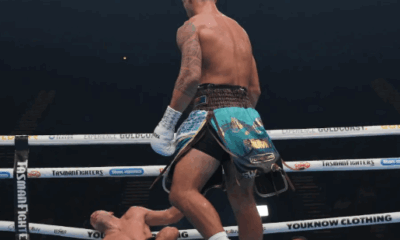
 Featured Articles2 weeks ago
Featured Articles2 weeks agoResults from Australia where Cruiser Champ Jai Opetaia Starched Another Overmatched Foe
-

 Featured Articles3 weeks ago
Featured Articles3 weeks agoMichael Hunter vs Eli Frankham: A Strange Match-Up at a Storied Venue
-
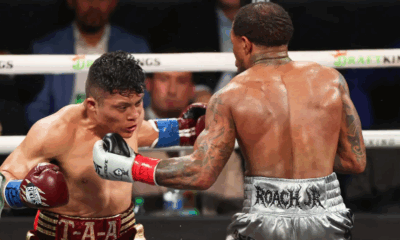
 Featured Articles2 weeks ago
Featured Articles2 weeks agoResults from San Antonio where Cruz vs Roach Ended in a Stalemate
-
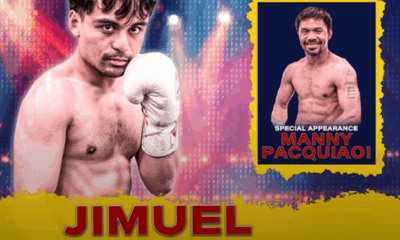
 Featured Articles3 weeks ago
Featured Articles3 weeks agoAvila Perspective, Chap. 353: ‘Pacman’ at Pechanga and More
-
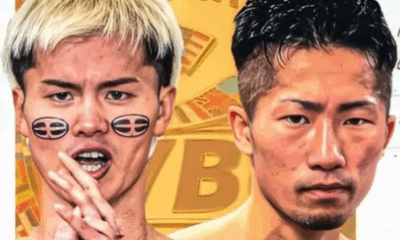
 Featured Articles4 weeks ago
Featured Articles4 weeks agoTakuma Inoue, Brother of Naoya, Wins Another World Title on a Monday in Japan
-
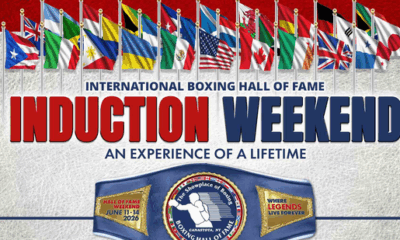
 Featured Articles3 weeks ago
Featured Articles3 weeks agoGennadiy Golovkin, Nigel Benn, and Antonio Tarver named to the Boxing Hall of Fame
-
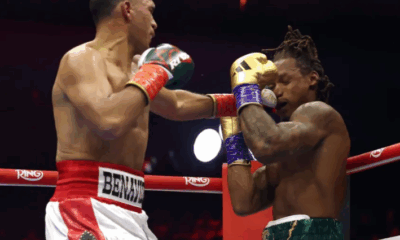
 Featured Articles4 weeks ago
Featured Articles4 weeks agoBenavidez, Haney, ‘Bam’Rodriguez, and Mason Bring Home the Bacon in Riyadh
-
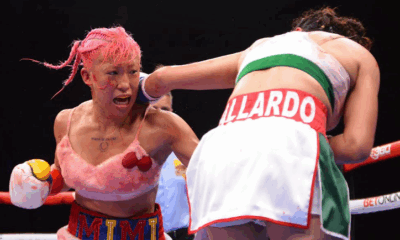
 Featured Articles4 weeks ago
Featured Articles4 weeks agoThe Ladies Excelled in Long Beach with WBO Champ ‘Mimi’ Hiruta Leading the Charge

